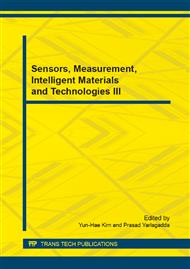p.863
p.867
p.872
p.877
p.882
p.889
p.893
p.899
p.904
Evaluations of Measurement Methods for Parallel Strand Cables
Abstract:
Cable tension is one of the important indexes of cable integrity as well as bridge stability and can be measured by various tension measurement methods. Parallel strand cables are special in structure, so the cable force measurement is more complex and difficult than other types of cables. In order to evaluate the common measurement methods for parallel strand cables, based on the Tongling Yangtze river road-rail bridge, the monitoring data during constructions were collected for statistical analysis. This paper summarized the common measurement methods for parallel strand cables, compared the test data form different measurement methods and in different construction stages. The results show the lift-off method assisted by the vibration wire load cell method can ensure force uniformity, the difference of forces measured by the vibration frequency method, the load cell method and the lift-off method is less than 5%, which can basically meet the constructions control requirement of cable force. This paper offer good reference value to other similar parallel strand cable stayed bridges.
Info:
Periodical:
Pages:
882-888
Citation:
Online since:
March 2015
Authors:
Price:
Сopyright:
© 2015 Trans Tech Publications Ltd. All Rights Reserved
Share:
Citation:


